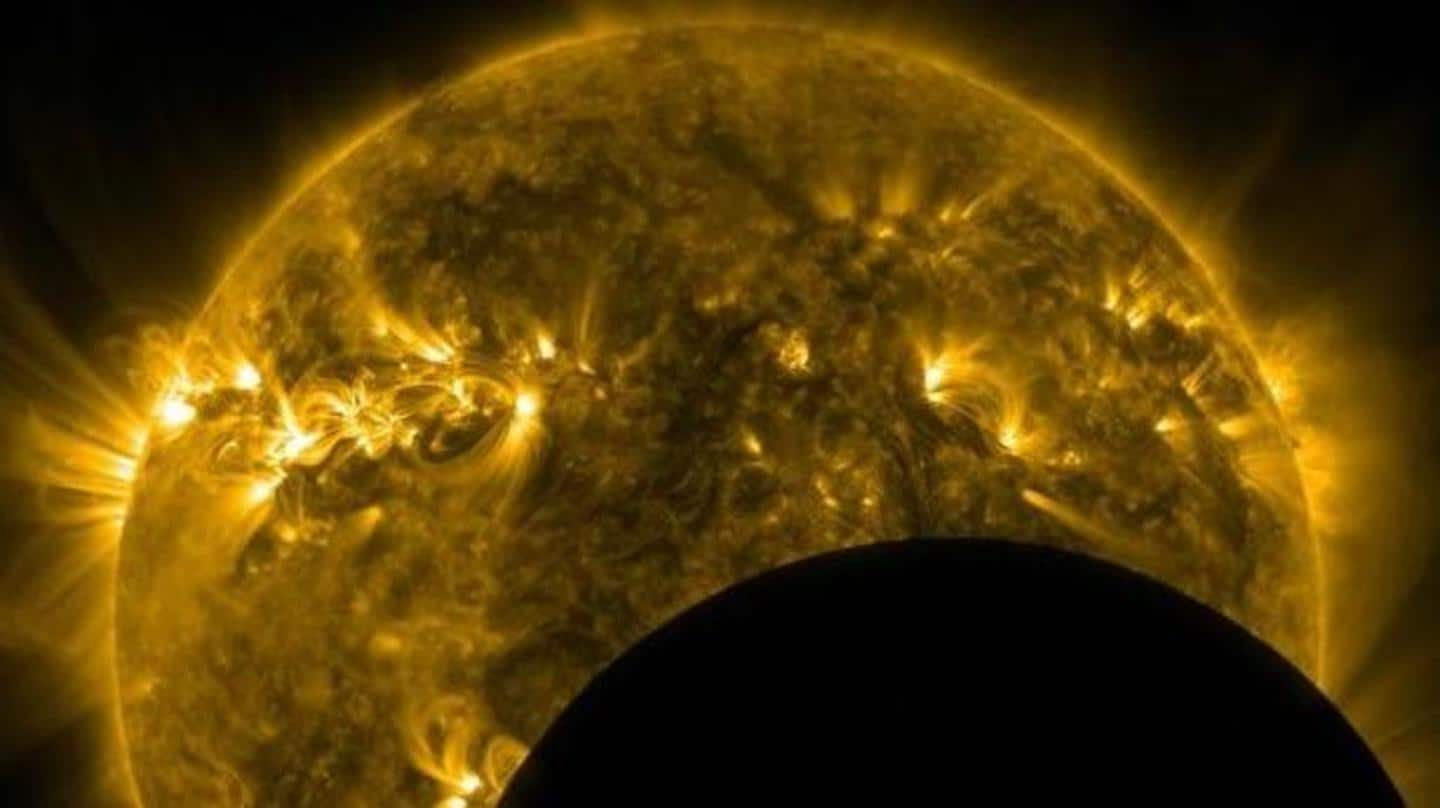
NASA's sun observatory observes solar eclipse in space
What's the story
Have you ever wondered what a solar eclipse looks like from space? If you haven't, take a look at the pictures grabbed by NASA's Solar Dynamic Observatory (SDO).
The observatory recorded the celestial event that lasted for 35 minutes and as you guessed, it looks magnificent.
SDO was launched in February 2010 and has been watching the sun closely since then.
Context
Why does this story matter?
The sun has been quite active lately with solar flares and coronal mass ejections. Space agencies have been watching the sun closer than ever to understand how our star's increased activity affects Earth.
The solar eclipse observed by SDO is not something like that. However, the sheer brilliance of the pictures captured and the rarity of the event have garnered a lot of attention.
The eclipse
Moon covered 67% of sun at the peak of eclipse
SDO observed the partial solar eclipse from its unique vantage point in space, the only spot where the eclipse was visible. In the event which lasted 35 minutes, the moon crossed the face of the sun.
At the peak of the eclipse, the moon covered 67% of the sun, and the lunar mountains were backlit by solar fire, according to Spaceweather.
Information
High-resolution images help SDO science team better
NASA has not made any comments about the event. Spaceweather, in the advisory released along with the images said, "High-resolution images like these can help the SDO science team better understand the telescope. They reveal how light diffracts around SDO's optics and filter support grids."
SDO
SDO studies solar activity and its role in space weather
The Solar Dynamic Observatory was launched in 2010 by NASA and the National Oceanic and Atmospheric Administration. It studies how solar activity is created and how it impacts space weather.
The spacecraft observes the sun's interior, atmosphere, magnetic field, sunspots, and energy output to understand how they influence our star's activity in a regular 11-year solar cycle.